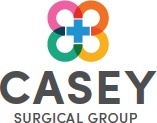Cushing’s Syndrome
Cushing’s syndrome is a hormonal disorder caused by prolonged exposure to high levels of cortisol hormone. It is also known as hypercortisolism. Chronic use of corticosteroid medications or steroid hormones may increase the cortisol levels in blood and aggravate the condition.
Causes
Cushing’s syndrome is a result of excessive levels of cortisol in the body which may be caused by overuse of corticosteroid medications. This is known as iatrogenic Cushing’s syndrome. Other causes such as adrenal or pituitary gland tumor may increase the secretion of adrenocorticotrophic hormone (ACTH) from the pituitary gland which stimulates the secretion of cortisol leading to Cushing’s syndrome.
Symptoms
The most common symptoms of Cushing’s syndrome include weight gain with the deposition of fat in the upper body, particularly around the upper back and between the shoulders, which is known as buffalo hump along with skin changes. Deposition of fat around the face leads to a rounded, moon shaped face. The arms and legs are comparatively thinner than the rest of the body. Pink or purple stretch marks may be seen over the skin of abdomen, thighs, breasts and arms. The healing of cuts, insect bites and infections is delayed. Women may experience thicker body and facial hair, known as hirsutism, and may also experience irregular or absence of menstrual cycle. In males, it may cause decreased libido, decreased fertility and erectile dysfunction. Other symptoms include fatigue, muscle weakness, depression, anxiety, loss of emotional control, cognitive difficulties and increased blood pressure. It may also be associated with bone loss leading to increased risk of fractures.
Diagnosis
The diagnosis of Cushing’s syndrome includes physical examination along with a medication history of the patient to determine the condition. Urine, blood and saliva test may also be ordered to evaluate the levels of cortisol in the body. Additional tests such as abdominal CT, ACTH test, pituitary MRI or bone density tests can be performed to determine the severity of the condition and presence of any tumor or any other anatomical abnormalities.
Treatment
The treatment of iatrogenic Cushing’s syndrome includes withdrawal or reduction in the use of the corticosteroid medications. However, if a reduction or withdrawal of the corticosteroid medication is not possible the blood sugar, cholesterol and bone mineral density should be regularly monitored.
Surgery may be considered to remove any tumor or other structural abnormality. Radiation therapy may be required after removal of the pituitary tumor to prevent recurrence. In some cases, hydrocortisone replacement therapy may be used after the surgery to replenish the normal hormonal levels. In case surgical treatment is not possible, medications can be used to control or block the secretion of excessive cortisol hormone.
Complications
The possible complications associated with Cushing’s syndrome include diabetes, pituitary tumor, high blood pressure, increased risk of fracture or osteoporosis and kidney stones.

 Menu
Menu





